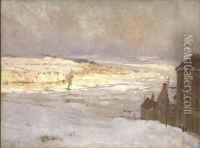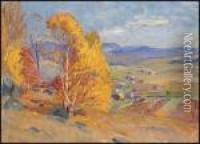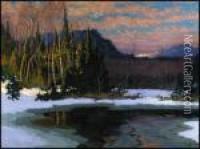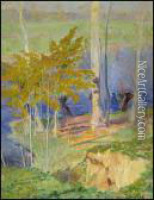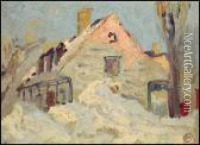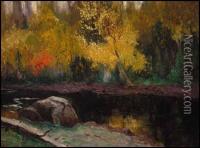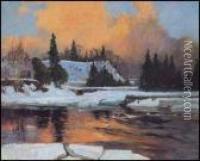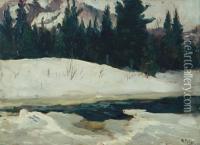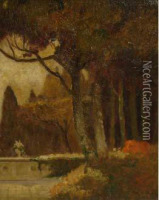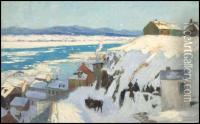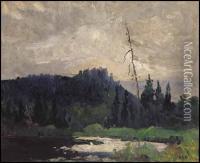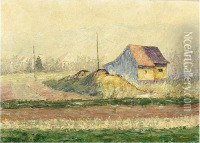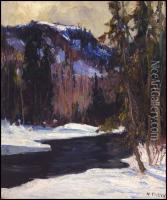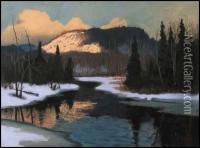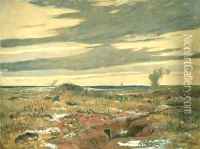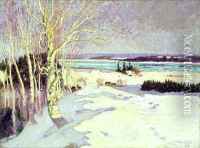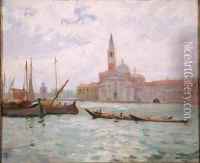Maurice Galbraith Cullen Paintings
Maurice Galbraith Cullen was a renowned Canadian landscape artist known for his mastery in depicting the rugged beauty of Canada's landscape, particularly in winter. Born on June 6, 1866, in St. John's, Newfoundland, Cullen was raised in Montreal from a young age after his family moved there. He initially trained as a marble cutter, but his passion for art led him to pursue a career in painting. In 1888, Cullen traveled to Paris to study at the École des Beaux-Arts under the tutelage of famed French academics like Elie Delaunay and later, at the Académie Julian, under Henri Doucet.
During his time in France, Cullen was exposed to Impressionism, which significantly influenced his style. He was particularly drawn to the works of Claude Monet, whose treatment of light and color left a lasting impact on Cullen's approach to landscape painting. Despite this influence, Cullen's work retained a distinctive, personal touch that often depicted the Canadian winter landscape in a moody and atmospheric manner.
Cullen returned to Canada in 1895 and settled in Montreal. He became a member of the Royal Canadian Academy of Arts and later served as its president. His paintings during this period often showcased the snow-covered streets, harbors, and countryside of Quebec, executed with a soft, almost ethereal palette that captured the hushed stillness and luminosity of snow.
Throughout his career, Cullen exhibited his works widely in Canada and abroad. His paintings were met with critical acclaim, and he was recognized as a pivotal figure in the development of Canadian Impressionism. Cullen's ability to blend the techniques of Impressionism with the distinct Canadian landscape set him apart from his contemporaries.
Maurice Cullen passed away in Chambly, Quebec, on March 28, 1934. His legacy is preserved in the collections of major Canadian art institutions such as the National Gallery of Canada, the Art Gallery of Ontario, and the Montreal Museum of Fine Arts. Cullen's contributions to Canadian art have been celebrated for their unique and poetic vision of the country's natural beauty, and he remains a celebrated figure in the history of Canadian art.
